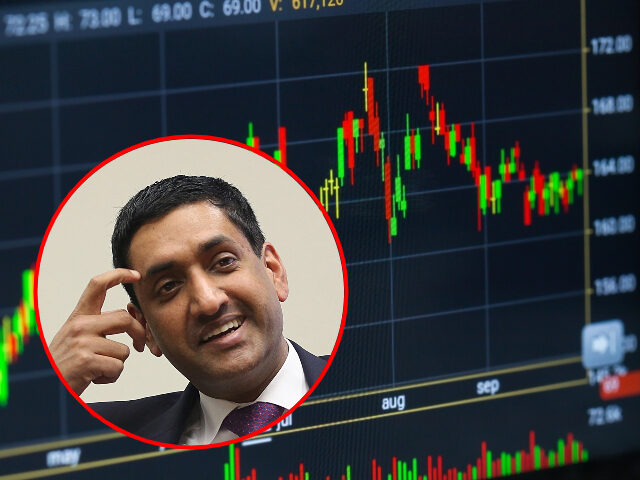Both Democrat and Republican lawmakers on average beat the stock market again in 2022, according to Unusual Whales’ annual report.
Despite the stock market having one of the worst years since 2008, lawmakers were able to avoid huge losses in 2022. While the total value of stocks traded shrunk, some politicians, such as far-left Rep. Ro Khanna (D-CA), made more than 5,700 trades in 2022, the report shows.
In 2022, the S&P 500 was down 18 percent. Yet on average, Republicans collectivity beat the market by 0.4 percent, while Democrats were only down -1.76 percent.
“House Republicans disclosed 1000+ less trades in 2022 compared to the year before. While House Democrats disclosed 1,000+ more trades in 2022 compared to 2021,” the analysis found.
The second and third highest volume traders were two House Republicans: Republican leader on Foreign Affairs Committee Rep. Michael McCaul (R-TX) with over 1,600 transactions totaling $176 million, and House Homeland Security member Rep. Diana Harshbarger (R-TN) with over 1,000 transactions totaling $21 million.
Among the lawmakers who individually performed the best were Reps. Patrick Fallon (R-TX), Debbie Schultz (D-FL), Susie Lee (D-NV), David Joyce (R-OH), and Sen. Gary Peters (D-MI).
Fallon served on the House Armed Services Committee. Schultz served on the powerful House Appropriations Committee with Lee and Joyce. Peters served on the Senate Armed Services Committee.
Not everyone performed well in 2022. Rep. Nancy Pelosi’s (D-CA) portfolio was down nearly 20 percent, a contrast to Fallon’s, whose was up 51 percent.
The report explained which asset classes had the most activity in 2022.
“Across both chambers, over $398M in stocks were bought and sold last year. Next were government securities and agency debt (ie. treasury bonds, municipal bonds, etc.),” the report read. “Other securities (such as mutual funds and ETFs) and non-publicly traded stocks were in third place.”
“Much of the buying for 2022 occurred in the beginning of the year, with some increases in September. December was one of the lowest periods, as was April and October. In both cases, the stock market began a trajectory into a bear market,” the report explained.
Follow Wendell Husebø on Twitter @WendellHusebø. He is the author of Politics of Slave Morality.

COMMENTS
Please let us know if you're having issues with commenting.